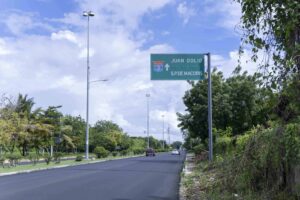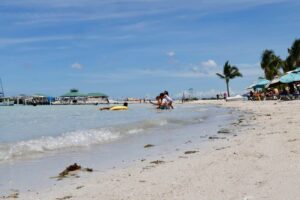He Ministry of Environment reported that compensation to the occupants in the southern (Ocoa) and northeastern (Bonao) areas of the National Park New Valley It would entail the payment of 1.8 billion pesos, a figure calculated after the appraisal process of both lands in the protected area.
During a meeting with journalists, Minister Armando Paíno Henríquez highlighted the interventions they have made in various protected areasciting the case of New Valleyspecifically in the Bonao area “and we continue working in the south.”
Regarding jobs, the vice minister of Protected AreasCarlos Batista, indicated: “We have concluded all the survey processes, there are properties with titles that have to be discussed.”
The vice minister stated that for compensation purposes the authorities consider those who occupied the area before decree 233-96, which categorized New Valley as a national park. “There are proven occupants with more than 30 years of occupancy, which has to be visualized in the appraisal,” he said.
He added that in the aforementioned areas of the park there are community residents with a low level of poverty and that a relocation plan has been established for them. He indicated that there is a provision from the Central Government to “begin with the provision of funds to go through the process of local appraisals, starting with those that have acquired rights.”
The official said that the Ministry carried out a study to establish how important it is to recover the protected area. In that sense, he explained that due to the water generated by that space, the recovery of the investment would be made in five to seven years.
Interventions in Hoyo del Pino
Regarding the interventions carried out in the Hoyo del Pino National Park, recently created by the Executive Branch, the authorities recalled that last week they held meetings with several community members.
“Fortunately the protected area has a very good level of conservation, so the recovery effort will be less, there is a lot of agriculture that is cocoa and coffee, which is a component that can be allowed because cocoa and coffee coexist or need the natural forest, then it allows a factor of income to the community,” said Vice Minister Batista. However, he explained that there are other elements that the authorities will have to face, related to livestock and short-cycle agriculture activities.
When asked about the number of occupants that would be evicted after the creation of the park, Batista indicated that there are few communities within the area. “There is a process that if there is ownership and the law is clear. The owners request compensation from the State and the State has to comply when the negotiations end,” he explained.
“If the activities they are carrying out at that moment meet the conservation objective of a national park, there is no problem in maintaining them,” he added.
They are looking to build 300 booths
Minister Henríquez reported that, although they are currently in the process of restoring more than 80 booths and surveillance points, they are seeking to expand these works until they reach 300 infrastructures, with the aim of achieving permanent protection.
The head of the Environment pointed out that currently half of the booths that are part of the restoration process are already ready.
During the meeting, Henríquez reviewed the actions carried out since he assumed the position of Minister of the Environment last August. He detailed the plans that will be executed in this four-year period as part of the environmental policy outlined by President Luis Abinader, which focuses on reforestation, defense and preservation projects. protected areasespecially hydrographic basins. “If we do not protect our basins, the accumulation of water for human life will be much more difficult every day,” Henríquez pointed out during his speech.
The head of the Environment also recalled the steps that have been taken to recover Luperón Bay, a commitment he made on his first visit to this area of the country. “We have strived to recover an area that is unique in the Caribbean, with the aim of turning the bay into a destination not only local, but global,” Henríquez explained.
He also highlighted the collaborations with the Ministries of Tourism and Education to promote ecotourism development and to include the Environment subject in the school curriculum “because a child empowered about environmental matters is a future defender of natural resources,” he said. He added that, together with the Ministry of Tourism, the entity has worked on the organization of beaches and the preservation of the 60 meters of high tide that correspond to public use.
The meeting with the authorities took place at the Ministry headquarters.


